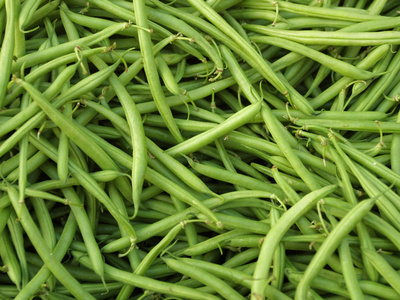 Most of us who are old enough, remember our grandmothers putting baking soda in with green beans, and being served those amazingly bright green vegetables. Nothing ever tasted quite the same afterwards. Well, that wasn't just our perceptions--that is food chemistry, and it comes about because of the chemical reactions between baking soda and sulfur compounds.
Most of us who are old enough, remember our grandmothers putting baking soda in with green beans, and being served those amazingly bright green vegetables. Nothing ever tasted quite the same afterwards. Well, that wasn't just our perceptions--that is food chemistry, and it comes about because of the chemical reactions between baking soda and sulfur compounds.Now many foods have sulfur compounds, which add quite a bit to flavour: in eggs, cabbages and other cruciferous vegetables, olive oil, coffee, and wine, just to name a very few foods, and those sulfur compounds take multiple forms. But baking soda breaks those sulfurous bonds and modifies the flavour of food. So if you don't like a certain food, in all probability it is the sulfur compounds that are responsible, and it is possible, therefore, to significantly alter the flavour of food (for better or worse) by using baking soda.
So I challenge all my readers: if you are interested in food chemistry, add a few grains of baking soda to your food over the next few weeks, and carefully observe and increase and decrease the amount of baking soda and note the results. Those dishes you didn't like before might take on new life, and even the ones you already like might benefit. Of course, if you try this and prefer the original, you will also benefit, because you can avoid other primarily basic ingredients, and stick to the more acidic ingredients in dishes that rely on sulfurous compounds for their flavour. By understanding the role of sulfurous compounds in food and flavour, you can make that understanding work to your advantage in coming up with the best possible taste for your cooking!
No comments:
Post a Comment